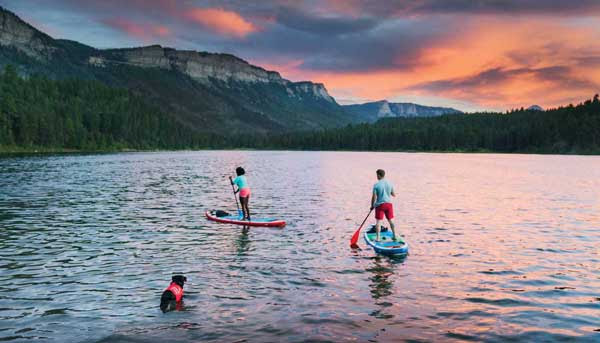Hinsdale County
Sherman District (aka Park District)
The Sherman District was one of the six districts into which the Colorado legislature divided Hinsdale County in 1893. (The others were the Galena, Cimarron, Lake, Whitecross and Carson Districts.) The location of the Sherman District is not well defined. Henderson (1926) indicates that the Park District overlaps the Sherman District. He provided a specific location for the Park District that appears to include the area we have enclosed in the Burrows Park District. He does indicate that it overlaps the Sherman District. Dunn (2003) distinguishes the two districts, with the Park District on the Lake Fork of the Gunnison River and the Sherman in the vicinity of the ghost town of Sherman. Mindat.org calls the two districts the same and places both south of the Cinnamon Pass area, which we have placed in the Burrows Park District. In general, we place the Sherman District (aka Park District) south of Handies Peak, to the area around Cottonwood Creek.
Dunn (Ibid) assigns the Black Wonder, Washington and Vermont mines to the Sherman District and the Illinois Boy, Champion and Grand Republic to the Park District. We have placed the Illinois Boy and Champion in the Burrows Park District.
The geology is generally described in Lipman (1976) and Lipman et al. (1976), summarized in Sanford et al. (1987) as lying in the area of the San Juan and Lake City calderas. Rocks included are Sapinero Mesa tuff and megabreccia, Precambrian granite representing the terrain in which the calderas formed, along with post-breccia lava flows and fill.
Mineralization is similar to the other Hinsdale County districts, with predominately veins carrying gold and silver, and some base metals. Sanford et al. (Ibid) found potential for precious and base metals, and porphyry molybdenum.
Mines listed in the district (mindat.org) include:
Black Wonder Mine (Black Wonder Extension; Black Wonder No. 2; Patented Claims: Black Wonder)
George Washington Group (Patented Claims: George Washington; No. 2 Ruby)
Minnie Lee Mine (Patented Claims: Minnie Lee; Minnie Lee Mill Site; Morning Star)
Sterling Group
Minerals listed in the district (mindat.org) include:
Acanthite
‘Apatite’
Chalcopyrite
Colusite
Covellite
Galena
‘Monazite’
Pyrite
Quartz
Rhodochrosite
Sphalerite
Tennantite
Tetrahedrite
Thorite
References:
Dunn, Lisa. 2003. Colorado Mining Districts: A Reference. Colorado School of Mines, Golden, Colorado.
Eberhart, Perry. 1969. Guide to Colorado Ghost Towns and Mining Camps. Fourth, revised edition. Swallow Press, Athens, Ohio.
Henderson, C.W. 1926. Mining in Colorado, a history of discovery, development and production. U.S. Geological Survey Professional Paper 138.
Lipman, P.W. 1976. Geologic Map of the Lake City Caldera Area, Western San Juan Mountains, Southwestern Colorado. U.S. Geologic Survey Miscellaneous Investigation Series Map I-962. Map Scale: 1:48,000.
Lipman, P.W., Fisher, F.S., Mehnert, H.H., Naeser, C.W., Luedke, R.G., and Steven, T.A. 1976. Multiple Ages of Mid-Tertiary Mineralization and Alteration in the Western San Juan Mountains, Colorado. Economic Geology, vol. 71, no. 3, pp. 571-588.
Sanford, R.F., Grauch, R.I., Hon, K., Bove, D.J., Grauch, V.J.S., and Korzeb, S.L. 1987. Mineral Resources of the Redcloud Peak and Handies Peak Wilderness Study Areas, Hinsdale County, Colorado. U.S. Geological Survey Bulletin 1715-B.
www.mindat.org, accessed October 2015.
This information is from the Colorado Geological Survey website at http://coloradogeologicalsurvey.org





